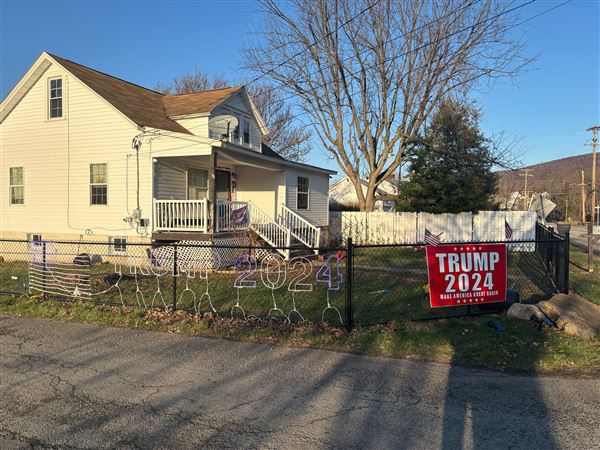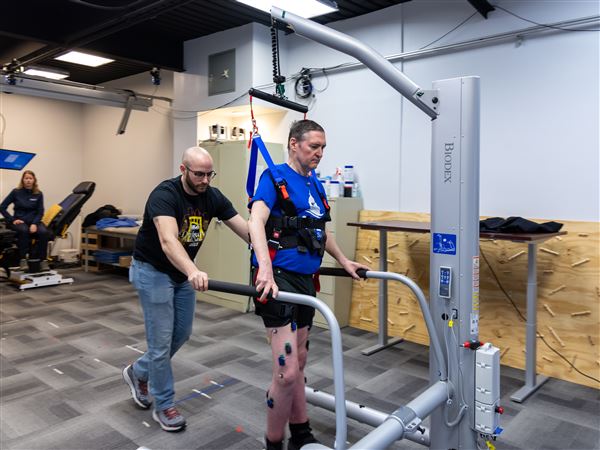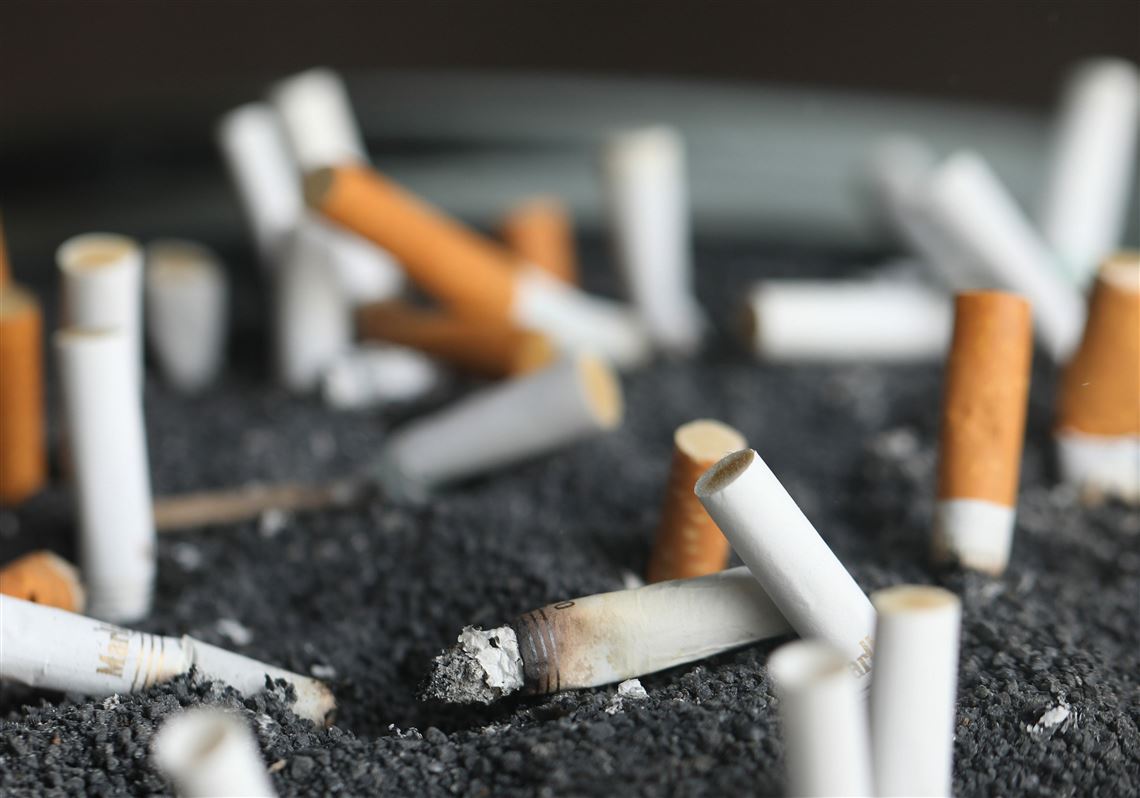Pennsylvania has, for another year, stalled on progress in efforts to reduce its burden of tobacco use.
The annual “State of Tobacco Control” report, released by the American Lung Association (ALA) on Wednesday, gave Pennsylvania Ds and Fs across the board. The report grades each state on how well it meets certain national standards for tobacco control and provides services to help people who want to quit smoking.
The commonwealth’s failing grades were given for its sale of flavored tobacco products, paltry funding of tobacco control programs and low tobacco taxes, the same grades it received last year.
“Pennsylvania has not done well every year,” said Jamie Garfield, a pulmonologist, professor of thoracic medicine and surgery at the Temple University Lewis Katz School of Medicine and an ALA spokesperson. “This is not new news, but it’s an opportunity to raise the public’s attention about it and move the needle.”
It’s not that Pennsylvania isn’t doing anything, said Elizabeth Hensil, ALA director of advocacy for Pennsylvania and West Virginia.
“It’s really more that they’re trailing far behind with not doing enough,” she said.
And the state can’t exactly afford to move at a snail’s pace. Lung and bronchus cancers were the leading cause of cancer death in the U.S. in 2024, per data from the National Cancer Institute’s Surveillance, Epidemiology and End Results (SEER) program, killing more than 125,000 people last year.
This trend has been mirrored in Pennsylvania since at least 2018, amounting to more than 32,000 deaths in the state from 2018 to 2022. The state has a rate of 34.3 deaths out of 100,000, above the national average of 32.4 deaths for that same time period, according to the National Cancer Institute and Centers for Disease Control and Prevention.
Pennsylvania high schoolers use tobacco products at higher rates than the national average too. Advocates blame an unprecedented rise in vaping products, particularly of the flavored variety, and nicotine pouches — which are placed between the lip and gum, as with chewing tobacco — such as Elf Bars and ZYN pouches that have pulled younger generations toward nicotine use.
In the report, the ALA encouraged states to up their investment in tobacco control programs using settlement monies; at the state level, it is prioritizing closing loopholes in the 2008 Clean Indoor Air Act.
The CDC recommends a certain percentage of funds each state should put toward tobacco prevention and cessation programs. For Pennsylvania, it recommends an investment of $140 million. But the state is only giving 14.8% of that — about $21 million — despite bringing in millions from tobacco revenue funds every year.
For the 2024 fiscal year, gross revenue garnered from the state cigarette tax and other tobacco products was about $585 million, per the Pa. Treasury.
That $21 million is “not nearly enough to make a difference for those who are addicted to tobacco,” said Dr. Garfield. That contribution led to one of the Fs Pennsylvania received.
Neighboring state West Virginia is giving 6.1% of its tobacco revenue money to control and cessation programs, according to the report.
“The amount of funding for these efforts is very abysmal,” said Sunil Sharma, division chief and professor at West Virginia University School of Medicine’s Pulmonary/Critical Care & Sleep Medicine Division.
And although Pennsylvania has instated indoor smoking restrictions for schools, retail establishments and government sites, no provision exists for indoor smoking in bars, and there are limited rules for restaurants, per the ALA report. Electronic cigarettes and other synthetic nicotine products are also not included in these regulations.
Even the laws that restrict indoor smoking in places like casinos are lax, argue some experts.
Up to 50% of gaming floors in Pennsylvania casinos allow indoor smoking, but there are not always clear barriers between smoking and nonsmoking areas, leaving smoke to waft through the vents or to an adjacent nonsmoking area.
“If you’ve been in a casino, you know how open they are,” said Ms. Hensil. “There is really no difference between the smoking side and the nonsmoking side.”
Parx Casino, in Bucks County, maintained its smoking ban after other casinos reinstated smoking post-COVID-19. Despite concerns that banning smoking inside casinos would lead to a drop in revenue, Parx Casino was the top revenue earner in slot machines in 2024 compared to other casinos across the state, per a report from the Pennsylvania Gaming Control Board.
Bars and restaurants can also allow indoor smoking if they meet certain requirements set by the Pennsylvania Department of Health and the Clean Indoor Air Act. This leaves people who work in the service industry especially vulnerable, said Dr. Garfield.
House Rep. Dan Frankel, D-Allegheny, sponsored House Bill 1657, which would amend the Clean Indoor Air Act to help close some of these gaps in the law. The bill was tabled in June.
Ms. Hensil said she’s working with Rep. Frankel to develop a new bill, and that they’re speaking with opponents to hear their concerns and amend in-progress legislation accordingly.
There are other ways for Pennsylvania to improve its grades and its investment in tobacco cessation. Increasing taxes on tobacco products is among them.
The commonwealth received an F in this category. The state takes a $2.60 tax on a pack of 20 cigarettes, but e-cigarette products aren’t taxed, and neither is smokeless tobacco.
“Increasing tobacco taxes is a really obvious solution for bringing in additional funding,” said Dr. Garfield. “It’s very clear that for every 10% increase in the price of cigarettes, fewer people pick these products up.”
Panagis Galiatsatos, director of tobacco and cancer screening clinic at Johns Hopkins University and an ALA spokesperson, as well as Dr. Sharma, said they have seen an increase in patients coming into their clinics having used flavored tobacco products. This can be dangerous for young people especially, they say.
“Flavors are a huge reason why people use tobacco products,” said Dr. Garfield.
About one in five high schoolers in Pennsylvania use tobacco products, double the national average, and e-cigarettes are the most popular across the board, per CDC data.
This was no surprise to Dr. Garfield.
“When you make these products bubble gum, mango and mint flavored, kids are more likely to pick them up,” she said. “They come for the flavors, but they stay because they’re addicted to nicotine.”
“I have seen younger kids in the clinic,” said Dr. Galiatsatos. “Seeing youth pick this up, my fear is we’ll have another generation of individuals addicted to nicotine products.”
The biggest trend he’s seeing is that while young people know cigarettes are dangerous — and cigarette use among high-school students is at an all-time low — they don’t feel the same way about e-cigarettes and flavored products. “The first thing they tell me is, ‘I thought this was safe,’” he said.
Dr. Sharma believes a flavor ban is coming sooner rather than later.
“There’s a lot of national debate about flavored products,” he said. “Nobody is in favor of it.”
The rise in popularity of flavored products is not just from tobacco industry marketing, but a lack of education about this new generation of products — and it’s up to health care providers to speak directly to patients about tobacco use, said Dr. Sharma.
“In clinics, there is a general lack of awareness at the community level,” he said.
A Pennsylvania Department of Health report found that smoking prevalence was highest in Pennsylvania residents with the lowest levels of annual income. Dr. Sharma sees this as an opportunity to bring grassroots-level education to communities.
“When I’m talking to a patient, it’s not just, ‘You need to stop smoking.’” He said. “It’s, ‘Everyone around you needs to stop smoking.’ My patient will tell me, ‘I quit smoking, but my husband still smokes and when he comes back from smoking on the patio, I can smell it all over him.’ Or my patients are smoking in the car with their windows closed.
“These are small but very tangible efforts we can all do to raise awareness,” he added. “That awareness will translate into stronger policies.”
First Published: January 29, 2025, 5:15 a.m.
Updated: January 30, 2025, 8:01 p.m.


















